Bohemia by the Bay: Looking Back on the Beat Generation
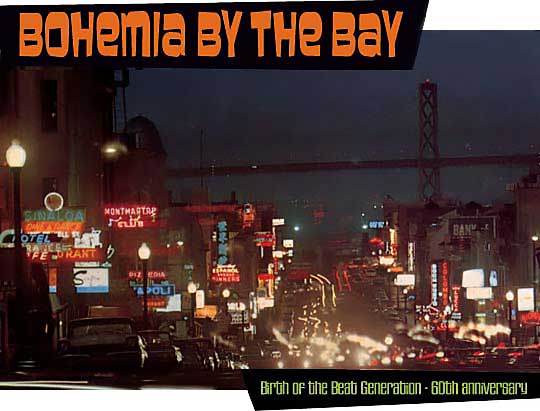
Groove on the 60th anniversary of the 'Beat Generation'—the term coined in 1948 by 26-year-old writer Jack Kerouac for a band of cultural rebels who would soon seek safe haven on the West Coast.
The Bay Area had long functioned, and would continue, as a frontier for the rest of the nation and the world. In the middle of the last century, in the atmosphere of relative comfort that followed World War II, San Francisco began to attract spirits at odds with complacency, particularly from New York City, where Kerouac and his fellow Beats had been brainstorming.
Rejecting some of the core values of mainstream America, Kerouac applied his new term to a breed of 'new vision' poets and authors whom he encountered in New York, including literary friends Allen Ginsberg, William Burroughs, and later Gregory Corso. And in the decade that followed, he migrated with most of them westward.
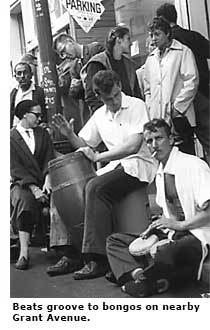
In the homey setting of San Francisco's North Beach neighborhood, fueled by good Italian deli food, coffee, alcohol, marijuana, and an assortment of other uppers and downers, the poets and authors fused with musicians, visual artists, thespians, filmmakers, and other free spirits to form a free-flowing group which 'San Francisco Chronicle' columnist Herb Caen dubbed 'Beatniks.'
They spoke a lingo that had been collected by jazzman Cab Calloway in his 'Hepster's Dictionary' of the previous decade. Living in modest 'pads' and on little 'bread,' these 'cats and kittens' found expression in art and on musical 'axes.'
As with the Forty-Niners of a century earlier and the Hippies of a decade later, the Beats generated legends about their lifestyle, which in turn attracted many more would-be participants from far and wide, while strengthening the group's cultural influence.
"I got a kick out of the counter-culture atmosphere," recalls Ned Eichler, who got to sample it in North Beach while working for his father's firm, Eichler Homes, before and after his stint in the Army in the early 1950s. "There was part of me that identified," he continues, "and the great thing about the Beats was, they didn't insist that you had to be like them."
Eichler developed an affinity for some, but not all, of the modernist modes of expression associated with the Beats in poems and novels. But he felt less in tune with their embrace of modern jazz, avant-garde painting, and experimental film, casually hip clothing, and a non-traditional approach to sexual and social relationships.
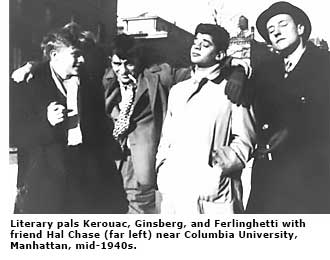
Some of these affects helped open minds and tastes for what was to come, with the Hippies, the Punks, and other subcultures in the San Francisco Bay Area and beyond.
Poet, playwright, and filmmaker ruth weiss, called by some the 'Goddess of the Beat Generation,' is one of the survivors, keeping the Beat spirit alive in appearances around the world. Having escaped Germany and the Nazis with her family as a child in 1933, weiss later divested her name of capital letters (in rebellion against her native tongue) and spent her teens and early 20s discovering America.
"And I ended up in San Francisco, right in North Beach, 'cause I knew it was a bohemian section," says weiss, now a spry 80. "I mean, Steinbeck and Saroyan...used to hang out at the Black Cat [on nearby Montgomery Street]."
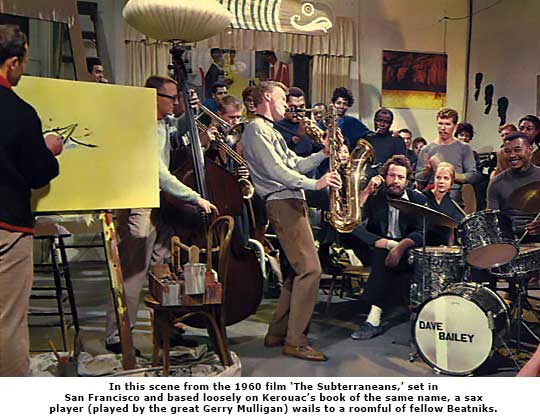
Like many of the gathering Beats, weiss took on a variety of jobs in the 1950s, including posing clothed or nude for the city's growing number of art students. She read her poems publicly alongside Madeline Gleason, who'd started San Francisco's first poetry festival in 1947. She also frequented performances by jazz artists, with whom she'd previously kept company in Chicago and New Orleans.
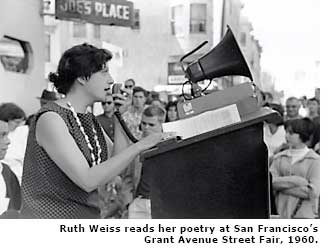
A saxophonist boyfriend, weiss says, "really taught me to open my 'third ear'" to the sounds of the postwar form of progressive jazz called bebop, or just bop. "And then I was writing, and it was just the same kind of rhythm." Another musician coaxed weiss into reading her poems with jazz accompaniment. She went public with this performance at North Beach's Cellar club in 1956, creating a fusion of forms that became a trademark of the Beats.




